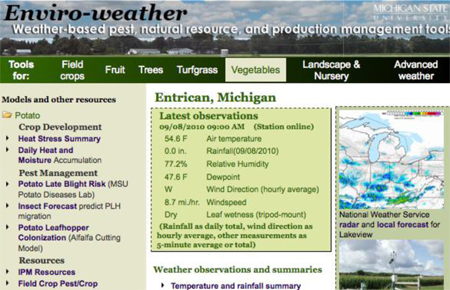Potato heat stress tools on Enviro-weather
Potato quality can be impacted by excess heat during the growing season. Potato growth begins when soil temperature reaches 40°F and, above this threshold, development is proportional to temperature. So it is not surprising that, during a warm growing season like 2010, the season is shorter and development is faster.
However, temperatures that are too warm, are detrimental to potatoes. According to Dave Douches, MSU professor of potato breeding and genetics, and Chris Long, MSU potato specialist, night temperatures above 70°F increases respiration, which reduces tuber gravity or solid content and causes stem end defects (due to the reversal of translocation of storage carbohydrates).
Daytime temperatures greater than 90°F or any 24-hour period with more than 35 degree-day accumulation (base 40), may enhance internal tuber defects such as heat necrosis, internal brown spot, and hollow heart.
Enviro-weather has two on-line tools that help potato growers assess the degree of heat stress in their potato crop (Figure 1). The first, the “Heat Stress Summary” displays a yearly synopsis of weather factors affecting potato growth. For example, at the MSU Montcalm Potato Research Farm (Entrican, Michigan) (Figure 2), there were more days and more total hours with more than 35 degree-days accumulation (base 40) during the 2010 growing season than in the previous five years. The 2010 growing season also had more nights and more total evening hours with temperatures above 70°F than in the previous five years. Total rainfall during the season is also shown in the summary since water affects stress in potatoes.
Figure 1.
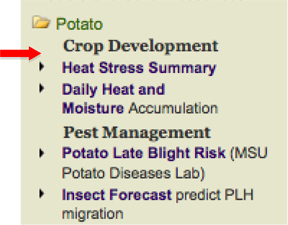
Figure 2.
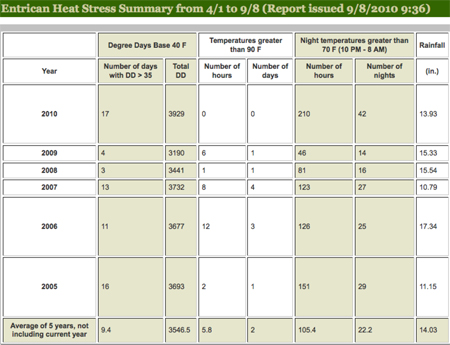
The second heat stress tool available on Enviro-weather is the “daily heat and moisture accumulation” table (Figure 3). You can view the daily temperature and moisture information for the current growing season (users can elect to see previous years by changing the date range). In addition to maximum and minimum air temperature and soil temperature at two inches, you can access daily degree-day accumulations (base 40) and soil moisture at four inches.
Figure 3.
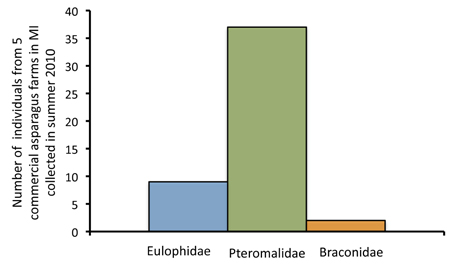
To access these tools, go to the Enviro-weather site (www.enviroweather.msu.edu) and select your local weather station and the vegetable page (Figure 4). Then, click on “Potato” from the crop list on the left (Figure 5). You will see a list of tools for potatoes.
Figure 4.
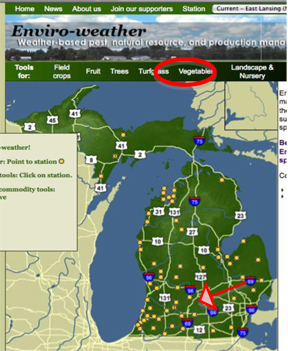
As always, if you have questions, concerns, comments or suggestions for Enviro-weather, please contact me at (517) 432-6520, bishopb@msu.edu.



 Print
Print Email
Email